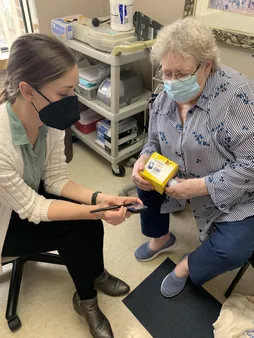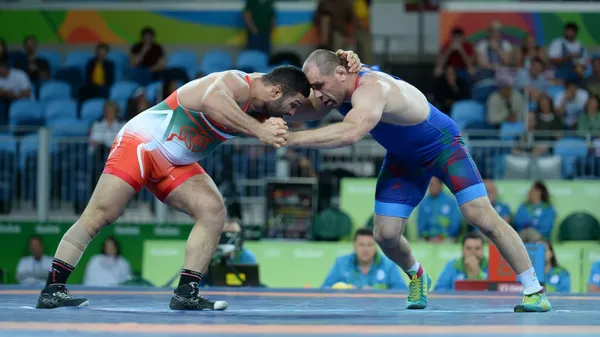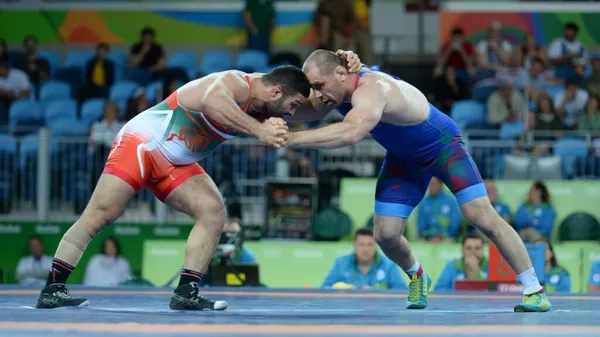Table of Contents
In the realm of swimming, the freestyle stroke stands out as a symbol of grace, efficiency, and speed. At Kizworld, we delve into the intricacies of freestyle swimming, exploring the techniques, benefits, and history that make it the stroke of choice for competitive swimmers and recreational enthusiasts alike. Discover The difference between freestyle and other swimming strokes, and learn how to master this versatile stroke with our comprehensive guide. Whether you're a seasoned swimmer looking to refine your technique or a beginner seeking to conquer the waters, kizworld provides the ultimate resource for unlocking the secrets of freestyle swimming.
The Difference Between Freestyle, Freestyle Motocross and Freestyle MX
I. Freestyle Swimming: A Comprehensive Guide to Strokes, Techniques, and Training
Freestyle Swimming: A Comprehensive Guide to Strokes, Techniques, and Training
The History of Freestyle Swimming
Freestyle swimming has a long and rich history, dating back to the early days of competitive swimming. The first recorded freestyle swimming race was held in London in 1869, and the stroke quickly became popular among swimmers of all levels. Freestyle is now the most popular swimming stroke in the world, and it is used in all major swimming competitions, including the Olympics.
Freestyle swimming has evolved over the years, and there are now a number of different variations of the stroke. The most common freestyle stroke is the front crawl, which is characterized by a continuous, alternating arm stroke and a flutter kick. Other variations of freestyle include the side stroke, the backstroke, and the butterfly stroke.
Stroke | Description |
Front Crawl | Continuous, alternating arm stroke and a flutter kick |
Side Stroke | Swimmer lies on their side and uses a scissor-like kick to propel themselves through the water |
Backstroke | Swimmer lies on their back and uses a flutter kick to propel themselves through the water |
Butterfly Stroke | Swimmer uses a powerful, undulating body movement to propel themselves through the water |
The Different Styles of Freestyle Swimming
There are a number of different styles of freestyle swimming, each with its own advantages and disadvantages. The most common style is the front crawl, which is the fastest and most efficient stroke. Other styles of freestyle include the side stroke, the backstroke, and the butterfly stroke.
- Front Crawl: The front crawl is the most common and fastest freestyle stroke. It is characterized by a continuous, alternating arm stroke and a flutter kick.
- Side Stroke: The side stroke is a slower and less efficient stroke than the front crawl, but it is easier to learn and is often used by beginners.
- Backstroke: The backstroke is a stroke that is swum on the back. It is a slower stroke than the front crawl, but it is often used in competitive swimming because it allows swimmers to breathe more easily.
- Butterfly Stroke: The butterfly stroke is a powerful and efficient stroke that is used in competitive swimming. It is characterized by a powerful, undulating body movement and a flutter kick.
Freestyle vs. Other Swimming Strokes
Freestyle swimming is the fastest and most efficient swimming stroke, but it is also the most difficult to learn. Other swimming strokes, such as the breaststroke and the backstroke, are easier to learn and are often used by beginners. However, freestyle swimming is the stroke of choice for competitive swimmers because it is the fastest and most efficient.
Stroke | Speed | Efficiency | Difficulty |
Freestyle | Fastest | Most efficient | Most difficult |
Breaststroke | Slower | Less efficient | Easier to learn |
Backstroke | Slower | Less efficient | Easier to learn |
Butterfly Stroke | Fast | Efficient | Difficult to learn |
The Benefits of Freestyle Swimming
Freestyle swimming is a great way to get in shape and improve your overall health. It is a low-impact exercise that is easy on your joints, and it can help you burn calories, build muscle, and improve your cardiovascular health. Freestyle swimming can also help you improve your flexibility and coordination.
- Burns Calories: Freestyle swimming is a great way to burn calories and lose weight. A 30-minute swim can burn up to 500 calories.
- Builds Muscle: Freestyle swimming helps to build muscle, especially in the arms, shoulders, and back.
- Improves Cardiovascular Health: Freestyle swimming is a great way to improve your cardiovascular health. It helps to lower blood pressure, reduce cholesterol levels, and increase your heart rate.
- Improves Flexibility and Coordination: Freestyle swimming helps to improve your flexibility and coordination. It also helps to strengthen your core muscles.
How to Learn Freestyle Swimming
If you are new to freestyle swimming, it is important to start slowly and gradually increase your speed and distance. You can learn freestyle swimming by following these steps:
- Start by learning the basic strokes. The basic strokes of freestyle swimming are the front crawl, the side stroke, the backstroke, and the butterfly stroke. You can learn these strokes by watching videos or taking swimming lessons.
- Practice your strokes in the pool. Once you have learned the basic strokes, you can start practicing them in the pool. Start by swimming short distances and gradually increase your distance as you get more comfortable.
- Focus on your technique. It is important to focus on your technique when you are swimming freestyle. Make sure that you are using the correct strokes and that you are breathing properly.
- Be patient. Learning freestyle swimming takes time and practice. Don't get discouraged if you don't see results immediately. Just keep practicing and you will eventually be able to swim freestyle like a pro.
Tips for Improving Your Freestyle Technique
If you want to improve your freestyle swimming technique, there are a few things you can do:
- Work on your body position. Your body position is important for freestyle swimming. Make sure that your body is streamlined and that your head is in line with your spine.
- Use a strong kick. Your kick is an important part of freestyle swimming. Make sure that you are using a strong, flutter kick to propel yourself through the water.
- Breathe properly. Breathing is also important for freestyle swimming. Make sure that you are breathing regularly and that you are not holding your breath.
- Practice regularly. The best way to improve your freestyle swimming technique is to practice regularly. The more you practice, the better you will become.
Freestyle swimming is a great way to get in shape, improve your overall health, and have fun. If you are new to freestyle swimming, start slowly and gradually increase your speed and distance. With practice, you will eventually be able to swim freestyle like a pro.
If you are looking for more information on freestyle swimming, check out these related posts:
- How to Improve Your Freestyle Swimming Technique
- The Best Freestyle Swimming Drills and Exercises
- The Top Freestyle Swimmers of All Time
II. Freestyle vs. Other Swimming Strokes: Understanding the Differences
Freestyle vs. Other Swimming Strokes: Understanding the Differences
Freestyle swimming is the fastest and most efficient of the four competitive swimming strokes. It is characterized by a continuous, alternating arm stroke and a flutter kick. Freestyle is often used in triathlons and other endurance events.
The other three competitive swimming strokes are backstroke, breaststroke, and butterfly. Backstroke is swum on the back with a scissor kick. Breaststroke is swum on the chest with a frog kick. Butterfly is swum on the stomach with a dolphin kick.
Stroke | Body Position | Arm Stroke | Kick |
Freestyle | Face down | Continuous, alternating | Flutter kick |
Backstroke | Face up | Continuous, alternating | Scissor kick |
Breaststroke | Face down | Simultaneous, forward | Frog kick |
Butterfly | Face down | Simultaneous, upward | Dolphin kick |
Freestyle is the most popular swimming stroke because it is the fastest and most efficient. It is also the easiest stroke to learn, making it a good choice for beginners.
If you are interested in learning how to swim freestyle, there are a few things you need to know. First, you need to be able to float on your stomach. Once you can float, you can start practicing the arm stroke and flutter kick. You can also take swimming lessons from a qualified instructor.
With a little practice, you will be able to swim freestyle like a pro! Learn more about how to learn freestyle swimming.
Benefits of Freestyle Swimming
- Freestyle swimming is a great way to get a full-body workout.
- It is a low-impact exercise, making it easy on your joints.
- Freestyle swimming can help you improve your cardiovascular health.
- It can also help you burn calories and lose weight.
- Freestyle swimming is a great way to relieve stress and improve your mood.
If you are looking for a fun and healthy way to get in shape, freestyle swimming is a great option. Learn more about the benefits of freestyle swimming.
Tips for Improving Your Freestyle Technique
- Keep your body streamlined. Your body should be straight and your head should be in line with your spine.
- Use a strong arm stroke. Your arms should be extended in front of you and you should pull them back through the water in a smooth, continuous motion.
- Kick your legs in a flutter kick. Your legs should be straight and you should kick them up and down in a quick, alternating motion.
- Breathe regularly. You should take a breath every few strokes. Try to breathe to the side so that you don't disrupt your stroke.
- Practice regularly. The more you practice, the better your freestyle technique will become.
With a little practice, you will be able to swim freestyle like a pro! Learn more tips for improving your freestyle technique.
III. Mastering Freestyle Swimming: Tips and Drills for Improved Technique
Mastering Freestyle Swimming: Tips and Drills for Improved Technique
Freestyle swimming is a popular and efficient swimming stroke that can be used for both recreation and competition. It is characterized by a continuous, alternating arm stroke and a flutter kick. Freestyle is the fastest of the four competitive swimming strokes and is often used in triathlons and other endurance events. In this comprehensive guide, we will explore the history, techniques, and benefits of freestyle swimming, and provide tips for improving your freestyle technique. Whether you are a beginner or an experienced swimmer, this guide will help you take your freestyle swimming to the next level.
Drill | Description |
Arm recovery drill | Focuses on improving the recovery phase of your arm stroke. |
Flutter kick drill | Helps to strengthen your legs and improve your kicking technique. |
Buoy pull drill | Uses a buoy to help you isolate your arm stroke and improve your technique. |
To master freestyle swimming, it is important to focus on the following key elements:
- Body position: Keep your body streamlined and parallel to the water's surface.
- Head position: Keep your head in a neutral position, looking straight down at the bottom of the pool.
- Arm stroke: Your arm stroke should be smooth and continuous. Reach forward with your arm, then pull it back through the water in a circular motion.
- Leg kick: Your leg kick should be a small, flutter kick. Keep your legs straight and kick from your hips.
- Breathing: Breathe to the side, not forward. Turn your head to the side and take a quick breath, then exhale slowly and smoothly.
With practice, you can improve your freestyle swimming technique and become a more efficient and faster swimmer. Here are some additional tips for improving your freestyle technique:
- Get a coach or instructor to help you learn the proper technique.
- Practice regularly. The more you swim, the better your technique will become.
- Focus on your breathing. Proper breathing is essential for good freestyle swimming.
- Work on your core strength. A strong core will help you maintain good body position.
- Stay motivated. Set goals for yourself and track your progress.
By following these tips, you can improve your freestyle swimming technique and become a more confident and efficient swimmer.
If you are looking for more information on improving your freestyle swimming technique, check out these related posts:
- Freestyle Swimming: The Complete Guide
- 6 Drills to Improve Your Freestyle Swimming Technique
- How to Breathe Properly While Swimming Freestyle
- 5 Common Freestyle Swimming Mistakes (and How to Fix Them)
- How to Swim: A Beginner's Guide
IV. Freestyle Training Regimens: Developing Speed, Endurance, and Efficiency
Freestyle Training Regimens: Developing Speed, Endurance, and Efficiency
To achieve optimal performance in freestyle swimming, a comprehensive training regimen is essential. This involves developing speed, endurance, and efficiency in the water. Here are some key elements of a well-rounded freestyle training program:
Speed Development:
- Interval Training: Incorporate interval sets into your workouts to improve your ability to swim at high speeds for short periods. This can involve alternating between high-intensity sprints and rest or recovery periods.
- Resistance Training: Use resistance bands, paddles, or fins to increase the resistance you face in the water. This helps build strength and power, which can translate to faster swimming speeds.
- Dryland Training: Engage in dryland exercises that target the muscles used in freestyle swimming, such as plyometrics, weightlifting, and core strengthening exercises.
Endurance Development:
- Long-Distance Swims: Regularly swim long distances at a steady pace to build your aerobic capacity and endurance. This can involve swimming for extended periods or completing multiple laps in a pool.
- Tempo Training: Incorporate tempo sets into your workouts, which involve swimming at a moderate pace for a sustained period. This helps improve your lactate threshold and ability to maintain a consistent pace during longer swims.
- Cross-Training: Engage in cross-training activities such as running, cycling, or rowing to improve your overall cardiovascular fitness and endurance.
Efficiency Development:
- Stroke Technique Analysis: Work with a coach or experienced swimmer to analyze your stroke technique and identify areas for improvement. This can involve video analysis or feedback during swim workouts.
- Drills and Exercises: Incorporate drills and exercises into your workouts that focus on improving your stroke technique, such as catch-up drills, single-arm swimming, and flutter kicking drills.
- Body Position and Alignment: Pay attention to your body position and alignment in the water. Maintaining a streamlined position and minimizing drag can significantly improve your efficiency.
By following a comprehensive training regimen that addresses speed, endurance, and efficiency, you can enhance your freestyle swimming performance and achieve your fitness goals.
Here are some additional tips for improving your freestyle swimming technique:
- Keep your head down and in line with your spine. Looking up or down can create drag and slow you down.
- Reach forward with your arms and pull them back along your body. Don't cross your arms over each other.
- Kick your feet up and down in a flutter kick. Keep your legs straight and your toes pointed.
- Breathe to the side, not straight up. This will help you keep your head down and your body streamlined.
- Practice regularly. The more you swim, the better your technique will become.
With consistent effort and dedication, you can improve your freestyle swimming skills and enjoy the benefits of this exhilarating and rewarding sport.
Related posts:
- The Benefits of Swimming for Fitness and Fun
- How to Improve Your Swimming Technique
- The Best Swimming Workouts for Beginners
V. Conclusion
Freestyle swimming is a versatile and efficient stroke that can be enjoyed by swimmers of all levels. Whether you are looking to improve your fitness, compete in triathlons, or simply enjoy a leisurely swim, freestyle is a great choice. With practice and dedication, you can master the freestyle technique and reap the many benefits it has to offer. So dive in, start swimming, and experience the joy of freestyle swimming!